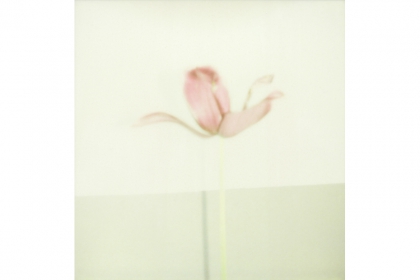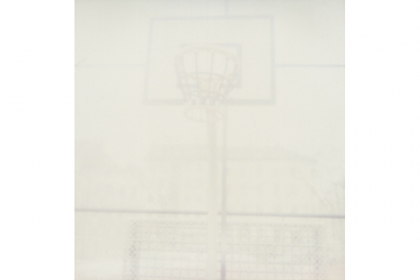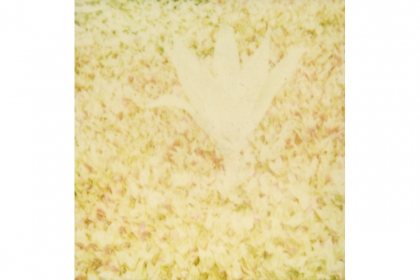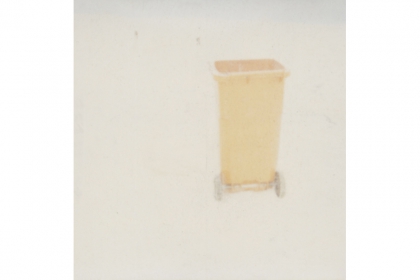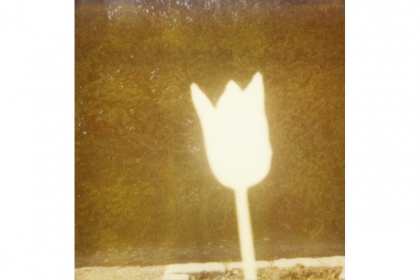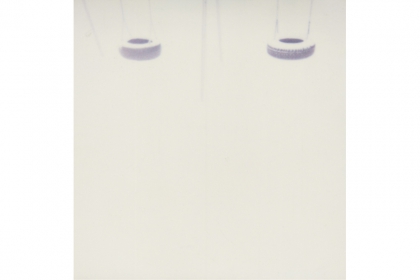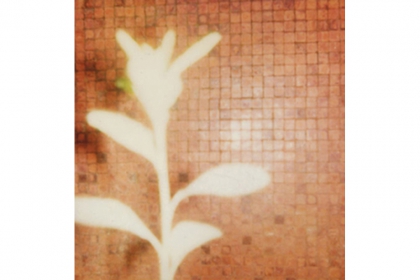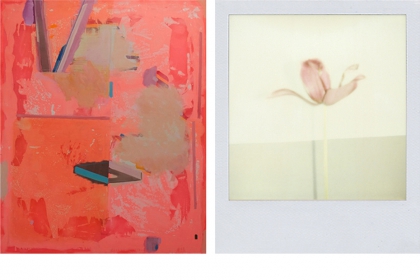Charif Benhelima (b. 1967, Brussels) lives and works in Antwerp.
The photographic work of Charif Benhelima is primarily centered on a quest for identity and the feeling of uprooting that gradually became the driver of his artistic approach. Although deep-down autobiographical, Benhelima’s work goes beyond questions of a personal nature. On the contrary, it is formed by and forms sociopolitical discourse of a universal dimension.
Through the medium of photography, Charif Benhelima deals with the topics of memory/oblivion, time, space, origin, politics of representation, truth and perception. He made name with the Welcome to Belgium series, a nine-year research project on the sentiment of being a foreigner. Formally, it is a documentary approach, in black and white, on the lives of immigrants, refugees and illegal aliens in Belgium, which echoes his own life. Besides having worked with analogical photography, he has been experimenting for more than fifteen years with the Polaroid 600.
Embarking on a kind of countercurrent to the digital medium he developed a highly personal style, whose images have a timeless quality. Bringing the viewer back and forth to past and present or suggesting a sense of suspension and void, Benhelima’s photographs create destabilization, enhance the feeling of transition, and obscure the notion of truth.
In parallel to his artistic research, Benhelima is a professor at the Malmö Art Academy - Lund University, Sweden and guest professor at the Higher Institute for Fine Arts (HISK), Ghent.
Recent solo exhibitions were held at MON - Museu Oscar Niemeyer, Curitiba; MAC de Niterói - Museum of Contemporary Art Rio de Janeiro; BPS 22 - Musée d'art de la Province de Hainaut, Charleroi; Bozar - Palais des Beaux-Arts, Brussels; Station Museum of Contemporary Art Houston; Volta NY 2010; Be-Part - Platform voor actuele kunst, Waregem; Künstlerhaus Bethanien, Berlin; PMMK (Mu.ZEE) - Museum voor Moderne Kunst, Oostende; MoMu - ModeNatie, Antwerp, among others.
Benhelima recently participated at the 4th edition of the Lubumbashi Biennale 2015; Fifth edition of Beaufort, triennial of contemporary art by the sea 2015; the Marrakech Biennale 2014; the International Biennial of Photography 2010 and 2012 Houston; and in group exhibitions at EMST - National Museum of Contemporary Art, Athens; Jewish Historical Museum - Jewish Cultural Quarter, Amsterdam; MAM - Museu de Arte Moderna, Rio de Janeiro; M HKA - Museum of Contemporary Art, Antwerp; Musée de Marrakech; ICA - Institute of Contemporary Arts Singapore; Shanghai Art Museum, Shanghai; Bag Factory, Johannesburg; Palau de la Virreina - La Capella, Barcelona; Centro Arte Moderna a Contemporanea Della Spezia; Witte de With Rotterdam and Museo de Arte Contemporáneo, Buenos Aires.
Void
At the Void exhibition Charif Benhelima presents a selection of works from the Black-Out and Roots series. With no digital manipulation, but rather making use of the technical limitations of the Polaroid 600 – medium from which the large format works on view derive and with which the artist has been experimenting for more than 15 years – Benhelima creates images that seem to be fading or yet to be fully developed. In both series, he deconstructs representation and explores the notion of void.
In Black-Out (2005-2014) Benhelima returns to his street photography practice. This time, capturing buildings, objects, billboards, parks, etc. the artist pushes to the edge the aesthetic of invisibility. Several of the pictures offer very little in the way of contextual framework. The surroundings of the central object are almost or entirely faded away. In others, the whole image is evanescent, as if at the limit between existence and nonexistence. In this series, Benhelima deconstructs what is documented. His treatment gives the impression of time suspended and obliterates the informative potential of photography, although the minimalist and almost abstract pictures of Black-Out paradoxically reassert its descriptive capacity. Looking closer, the objects portrayed are defined: a few lines allow us to recognise a basketball court , a swing or a gradient of grey tones reveal trunks of trees. However, the overlighting, that is the exacerbated contact imprint of the photographic image’s referent is used, conceptually, as a process of disinformation or wiping out. Black-Out, as the title indicates, alludes to forgetting, to loss of consciousness, and also to the suppression of information. Decontextualization, or more precisely, the emptying off the image caused by a kind of fog, is a sign that (every) representation hides that which lies beyond. The void is, in this case, the context itself - it is identity, memory, history left open-ended.
In Roots (2008-2015) – a study derived from and complementary to Black-Out – Benhelima applies street photography and his evanescent aesthetics to the observation of flowers and vegetation in an urban environment. Two groups of images make up the series, Occupancy and Memorial. In Occupancy, the artist portrays the symbiosis between plants and man-made elements (walls, lampposts, pavements etc.) or between plants of different species and origin, in reference to the occupation of social space and its intersecting framework of exchanges and living together, as well as to its formation through migratory processes. The impression of invisibility or emptiness, however, affects the perception of both the space and its occupancy. At times, while the background is apparent, the central object – flowers, trees or foliage – is shown as a silhouette in negative, like a cut-out from the Polaroid photo. An absent presence from the image itself, the central object outlines and occupies space, establishing relations with the other elements, but seemingly hollow like low relief imprints. In Memorial, meanwhile, flower vases look evanescent and almost completely out of context, at times even seeming to float against an infinite background. It is as if Benhelima has taken the studio into public space and treated its elements as still life. Memorial differs, however, from the mythological or religious symbolism of traditional still life, or from the pure observation and plastic exploration of objects, typical of that genre. The aesthetic use of minimal forms by dissolving much of the physical structure of the flowers refers to the notion of memory/oblivion, while the vacuous context relates to questioning about notions of origin, identity, belonging etc. Supported by the title, the pictures suggest a tribute to someone, to an event or to what constitutes the great absence evoked by the images.

